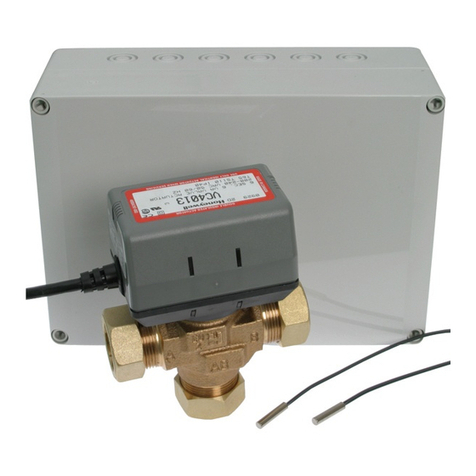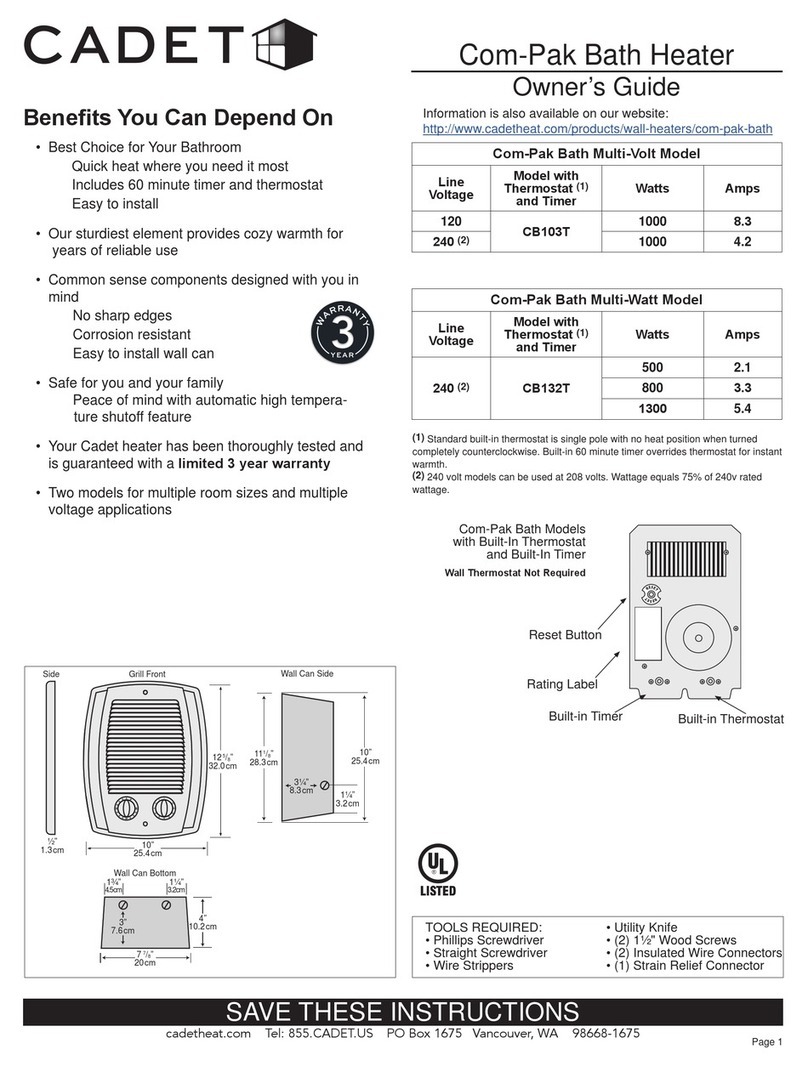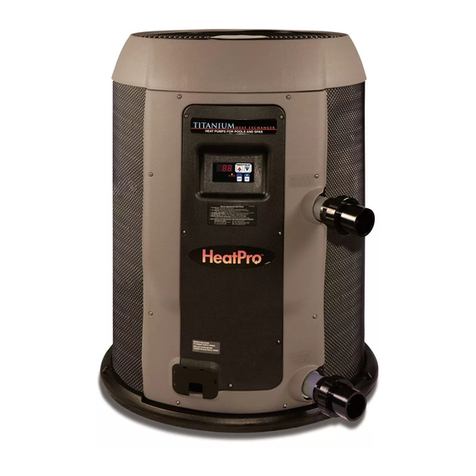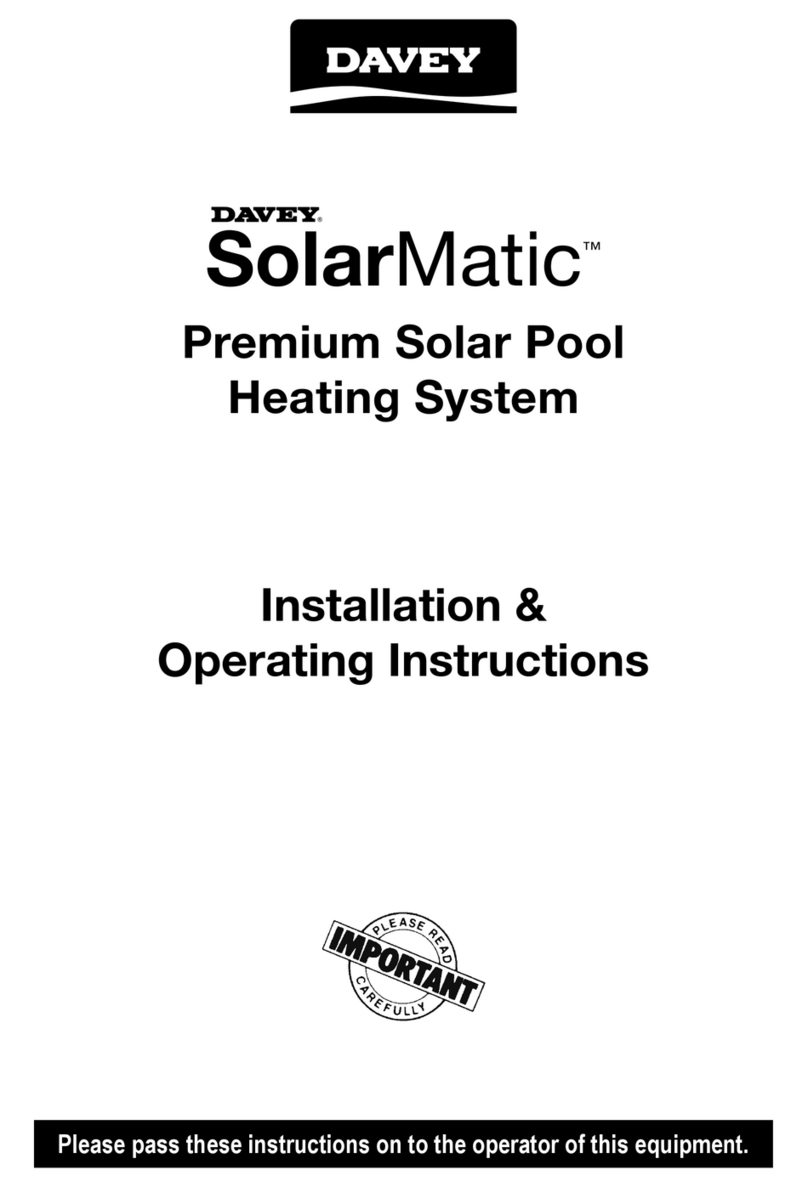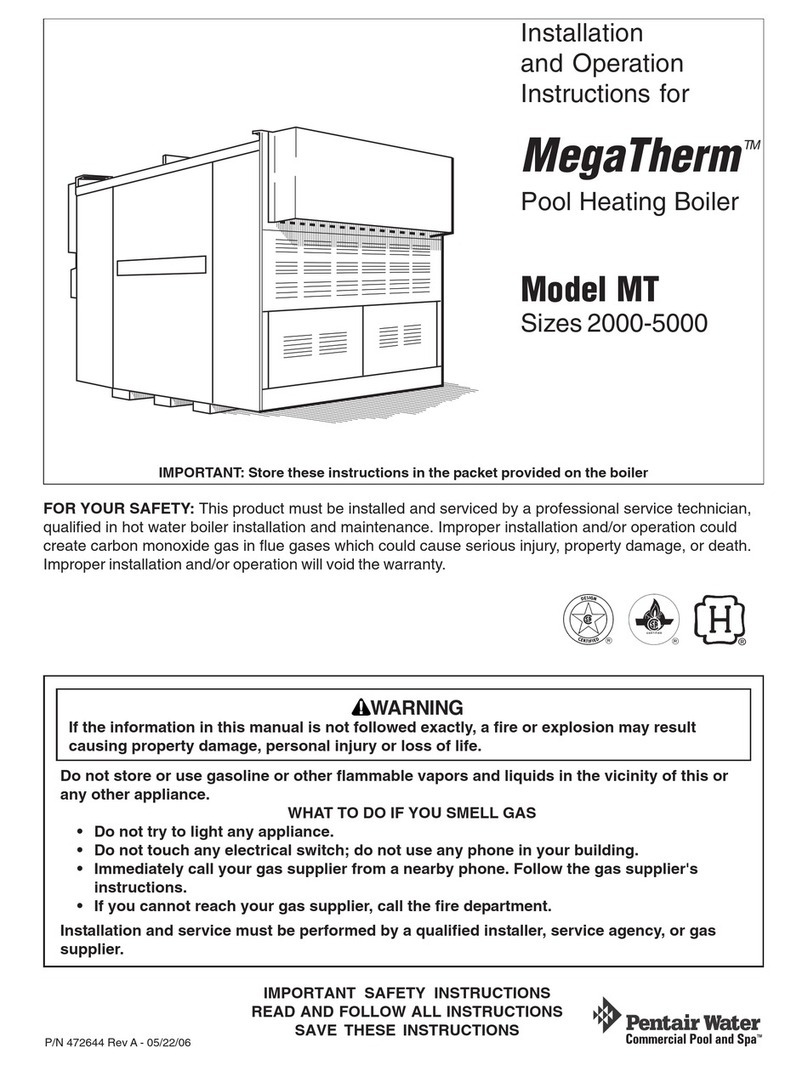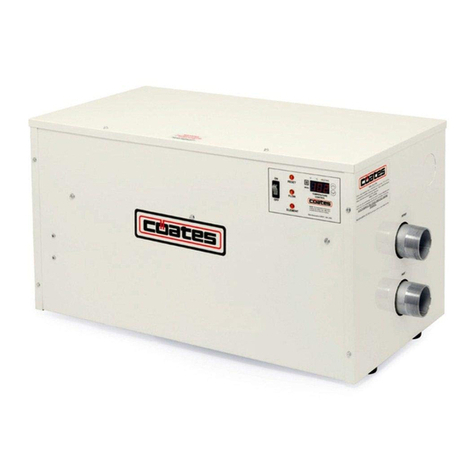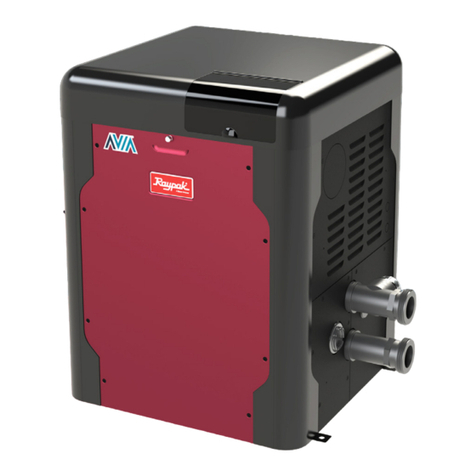Heat & Glo VRTIKL-AU Installation instructions

1
Heat & Glo • VRTIKL-AU • 2123-900 Rev. H • 10/10
Installation & Operation
Instructions
Installation and service of this gas stove should be per-
formed by qualified personnel.
AUSTRALIAN GAS ASSOCIATION CERTIFIED
Certificate Number: 7153
Model:
VRTIKL-AU
FREESTANDING STOVE
• Do not store or use gasoline or other flam-
mablevapors andliquidsin thevicinityofthis
or any other appliance.
• What to do if you smell gas
- Do not try to light any appliance.
- Do not touch any electrical switch. Do not
use any phone in your building.
- Immediately call your gas supplier from a
neighbor’s phone. Follow the gas suppli-
er’s instructions.
- If you cannot reach your gas supplier, call
the fire department.
• Installation and service must be performed
bya qualified installer, service agency,or the
gas supplier.
WARNING: If the information in these
instructions is not followed exactly, a fire
or explosion may result causing property
damage, personal injury, or death.
DO NOT DISCARD THIS MANUAL
CAUTION
• Leave this manual with
party responsible for use
and operation.
DO NOT
DISCARD
• Important operating
and maintenance
instructions included.
• Read,understandandfollow
these instructions for safe
installation and operation.
WARNING
HOT SURFACES!
Glassandothersurfacesarehotduring
operation AND cool down.
Hot glass will cause burns.
• Do not touch glass until it is cooled
• NEVER allow children to touch glass
• Keep children away
• CAREFULLY SUPERVISE children in same room as
fireplace.
• Alert children and adults to hazards of high temperatures.
High temperatures may ignite clothing or other flammable
materials.
• Keep clothing, furniture, draperies and other flammable
materials away.

2 Heat & Glo • VRTIKL-AU • 2123-900 Rev. H • 10/10
Model: VRTIKL-AU is Australian Gas Asso-
ciation APPROVED FOR NATURAL GAS OR
PROPANEASABALANCED FLUE HEATER.
Refer to the appliance data plates for gas
consumptions and pressures.
Installation of this appliance should only be
carried out by an authorized person in accor-
dance with the manufacturers instructions.
Appliance is to be installed in full compliance
with the National Gas Installation Standard
AS5601, all relevant codes and regulations
laid down by the gas fitting authorities, mu-
nicipal building regulations, electrical wiring
regulations, and the requirements of theAGA
Gas Installation Code must be observed.
This appliance and its components are test-
ed and safe when installed in accordance
with this Installation Manual. Report to your
dealer any parts damaged in shipment, spe-
cifically check glass condition. The gas logs
and flue system components are in separate
packages.
Read all instructions before starting installa-
tion and follow these instructions carefully
during installation to ensure maximum benefit
and safety. Failure to follow them will void your
warranty and may present a fire hazard.
The Heat & Glo warranty will be voided by,
and Heat & Glo disclaims any responsibility
for the following actions:
• Installation of any damaged heater or flue
system component
• Modification of the heater or balanced flue
system installation other than as instructed
by Heat & Glo.
• Improper positioning of the gas logs or the
glass door
• Installation and/or use of any component
part not manufactured or approved by Heat
& Glo, not withstanding any independent
testing laboratory or other party approval of
such component part or accessory.
IMPORTANT: Read all instructions carefully before starting instal-
lation. Failure to follow these installation instructions may result in
a possible fire hazard and will void the warranty. Save this manual
for future reference.
PLEASE READ THIS MANUAL BEFORE INSTALLING AND USING THIS APPLIANCE.
Heat & Glo, a brand of Hearth & Home Technologies, Inc.
7571 215th Street West, Lakeville, MN 55044
Copyright 2009 • Printed in U.S.A.

3
Heat & Glo • VRTIKL-AU • 2123-900 Rev. H • 10/10
Table of Contents
1 Listing and Code Approvals
A. Design and Installation Considerations . . . . . . . . . . . . . . . 4
B. Non-Combustible Materials Specification. . . . . . . . . . . . . . 4
C. Combustible Materials Specification . . . . . . . . . . . . . . . . . 4
D. Inspect Appliance and Components. . . . . . . . . . . . . . . . . . 4
2 Framing and Clearances
A. Selecting Appliance Location. . . . . . . . . . . . . . . . . . . . . . . 5
B. Clearances to Combustibles . . . . . . . . . . . . . . . . . . . . . . . 5
C. Optional Stone Surround Installed . . . . . . . . . . . . . . . . . . . 6
3 Termination Locations
A. Flue Termination Minimum Clearances . . . . . . . . . . . . . . . 7
4 Flue Information
A. Flue Components. . . . . . . . . . . . . . . . . . . . . . . . . . . . . . . . 9
B. Use of Elbows . . . . . . . . . . . . . . . . . . . . . . . . . . . . . . . . . . 9
C. Measuring Standards. . . . . . . . . . . . . . . . . . . . . . . . . . . . . 9
D. Flue Diagrams . . . . . . . . . . . . . . . . . . . . . . . . . . . . . . . . . 10
E. Horizontal Termination . . . . . . . . . . . . . . . . . . . . . . . . . . . 15
F. Slim Line Heat Shield. . . . . . . . . . . . . . . . . . . . . . . . . . . . 16
G. Vertical Termination . . . . . . . . . . . . . . . . . . . . . . . . . . . . . 18
H. Vertical Flue Restrictor. . . . . . . . . . . . . . . . . . . . . . . . . . . 20
5 Gas Information
A. Gas Pressure Requirements . . . . . . . . . . . . . . . . . . . . . . 21
B. Gas Connection . . . . . . . . . . . . . . . . . . . . . . . . . . . . . . . . 21
6 Electrical Information
A. Ignition System Wiring . . . . . . . . . . . . . . . . . . . . . . . . . . . 22
7 Appliance Setup
A. Remove Glass Door. . . . . . . . . . . . . . . . . . . . . . . . . . . . . 23
B. Remove Shipping Materials . . . . . . . . . . . . . . . . . . . . . . . 23
C. Unbolting Appliance from the Pallet . . . . . . . . . . . . . . . . . 23
D. Leveling and Lagging Down the Appliance . . . . . . . . . . . 23
E. Accessories . . . . . . . . . . . . . . . . . . . . . . . . . . . . . . . . . . . 24
F. Top to Rear Flue Conversion . . . . . . . . . . . . . . . . . . . . . . 24
G. Positioning the Logs. . . . . . . . . . . . . . . . . . . . . . . . . . . . . 26
H. Placing Mineral Wool . . . . . . . . . . . . . . . . . . . . . . . . . . . . 26
8 Operating Instructions
A. Before Lighting Appliance. . . . . . . . . . . . . . . . . . . . . . . . . 27
B. Lighting the Appliance . . . . . . . . . . . . . . . . . . . . . . . . . . . 28
C. After Appliance is Lit. . . . . . . . . . . . . . . . . . . . . . . . . . . . . 29
D. Frequently Asked Questions . . . . . . . . . . . . . . . . . . . . . . 29
9 Maintaining and Servicing Appliance
A. Front Door Glass Assembly Removal . . . . . . . . . . . . . . . 30
B. Maintenance Tasks. . . . . . . . . . . . . . . . . . . . . . . . . . . . . . 31
10 Troubleshooting
A. Electronic Ignition System . . . . . . . . . . . . . . . . . . . . . . . . 32
11 Reference Materials
A. Appliance Dimension Diagram Without Stone Surround . 33
B. Appliance Dimension with Stone Surround Diagram . . . . 34
C. Flue Components List . . . . . . . . . . . . . . . . . . . . . . . . . . . 35
D. Service Parts . . . . . . . . . . . . . . . . . . . . . . . . . . . . . . . . . . 36
E. Limited Lifetime Warranty. . . . . . . . . . . . . . . . . . . . . . . . . 40
F. Contact Information . . . . . . . . . . . . . . . . . . . . . . . . . . . . . 42
= Contains updated information.

4 Heat & Glo • VRTIKL-AU • 2123-900 Rev. H • 10/10
1
1 Listing and Code Approvals
A. Design and Installation Considerations
Heat & Glo balanced flue gas appliances are designed to
operate with all combustion air siphoned from outside of
the building and all exhaust gases expelled to the outside.
No additional outside air source is required.
When planning an appliance installation, it’s necessary to
determine the following information before installing:
• Where the gas stove is to be installed.
• The flue system configuration to be used.
• Gas supply piping.
Check building codes prior to installation.
• Installation MUST comply with local, regional, state and
national codes and regulations.
• Consultlocalbuilding,fireofficialsorauthoritieshavingjurisdic-
tion about restrictions, installation inspection, and permits.
CAUTION
B. Non-Combustible Materials Specification
Material which will not ignite and burn. Such materials are
those consisting entirely of steel, iron, brick, tile, concrete,
slate, glass or plasters, or any combination thereof.
C. Combustible Materials Specification
Materials made of or surfaced with wood, compressed
paper, plant fibers, plastics, or other material that can ig-
nite and burn, whether flame proofed or not, or whether
plastered or unplastered shall be considered combustible
materials.
Do NOT use this gas stove if any part has been under water.
Immediately call a qualified service technician to inspect the
appliance and to replace any part of the control system and
any gas control which has been under water.
WARNING
D. Inspect Appliance and Components
• Carefully remove the appliance and components from
the packaging.
• Remove door and set aside on protective surface.
• Remove log set and component pack from firebox.
• Report to your dealer any parts damaged in shipment,
particularly the condition of the glass.
• Read all of the instructions before starting the insta-
llation. Follow these instructions carefully during the
installation to ensure maximum safety and benefit.
Inspectapplianceand components for damage.
Damaged parts may impair safe operation.
• Do NOT install damaged components.
• Do NOT install incomplete components.
• Do NOT install substitute components.
Report damaged parts to dealer.
Hearth & Home Technologies disclaims any
responsibilityfor,andthewarranty will be voided
by, the following actions:
• Installation and use of any damaged appliance or flue
system component.
• Modification of the appliance or flue system.
• Installation other than as instructed by Hearth & Home
Technologies.
• Improper positioning of the gas logs or the glass door.
• Installationand/oruseofanycomponentpartnotapproved
by Hearth & Home Technologies.
Any such action may cause a fire hazard.
WARNING
WARNING

5
Heat & Glo • VRTIKL-AU • 2123-900 Rev. H • 10/10
Figure 2.1
Alcove
AA
G
D
H
F
B
E
I
A
AB C DEFGH I
Millimeters 152 76 308 1372 914 781 337 267 394
“A” measurement is from gas stove top, not side.
B. Clearances to Combustibles
2
2 Framing and Clearances
Note:
•Illustrations reflect typical installations and are FOR
DESIGN PURPOSES ONLY.
•Illustrations/diagrams are not drawn to scale.
•Actual installation may vary due to individual design
preference.
Fire Risk
Provide adequate clearance:
• Around air openings
• To combustibles
• For service access
Locate appliance away from traffic areas.
A. Selecting Appliance Location
Whenselectingalocationforyour applianceitisimportantto
consider the required clearances to walls (see figure 2.1). Note: For actual appliance dimensions refer to
Section 11.
WARNING
Note: Mantel must
maintain 25mm
clearance from
vertical flue.

6 Heat & Glo • VRTIKL-AU • 2123-900 Rev. H • 10/10
D
C
AA
B
Figure 2.2
AB C D
Millimeters 83 102 781 914
C. Optional Stone Surround Installed
WARNING
Fire Risk.
Odor Risk.
Tipping Risk
• Install gas stove on a stable, level platform/
floor strong enough to support gas stove
without tipping.
• USE wood flooring, ceramic tile, brick hearth
or high pressure laminate flooring applied
directly over the sub-flooring material.

7
Heat & Glo • VRTIKL-AU • 2123-900 Rev. H • 10/10
Figure 3.2 Multiple Vertical Termination
Figure 3.3 specifies minimum flue heights for various
pitched roofs.
Figure 3.3 Minimum Height from Roof to Lowest Discharge
Opening
610 mm VERTICAL
WALL
TERMINATION
CAP
LOWEST
DISCHARGE
OPENING
H (MIN.) - MINIMUM HEIGHT FROM ROOF
TO LOWEST DISCHARGE OPENING
Angle H (Min.) M
0°-26.6° ........................................................0.30*
26.6°-30.3° ........................................................0.38*
30.3°-33.7° ........................................................0.46*
33.7°-36.9° ........................................................0.61*
36.9°-39.8° ........................................................0.76
39.8°-42.5° ........................................................0.99
42.5°-45.0° ........................................................1.22
45.0°-49.4° ........................................................1.52
49.4°-53.1° ........................................................1.83
53.1°-56.3° ........................................................2.13
56.3°-59.0° ........................................................2.29
59.0°-60.3° ........................................................2.44
*.91 M minimum in snow regions
Balanced Flue
Gas Termination Natural Draft Gas, Wood &
Fuel Oil Termination
A1000 mm 510 mm
B0 mm 460 mm
610 mm
B
GAS
TERMINATION
GAS, WOOD OR FUEL
OIL TERMINATION
A
(MINIMUM) TO
PERPENDICULAR
WALL
(GAS ONLY)
A. Flue Termination Minimum Clearances
Fire Risk.
Explosion Risk.
Maintain flue clearance to combustibles as
specified.
• Donot pack airspace withinsulation orother
materials.
Failure to keep insulation or other materials
away from flue pipe may cause fire.
Figure 3.1
3
3 Termination Locations
Measure horizontal clearances from this surface.
Measure vertical clearances from this surface.
(See Figure 3.4 for specific clearances)
WARNING

8 Heat & Glo • VRTIKL-AU • 2123-900 Rev. H • 10/10
f
c
n
I
openable
window
j
jj
door
h
hh
T
ee
P
T
g
k
kdb
d
M
a
c
g
See note 2
See note 3
T
T = Flue terminal M = Gas meter Shading indicates prohibited
I = Mechanical air inlet P = Electricity meter or fuse box areas for flue terminals
a - Below eaves, balconies or other projections: MIN. CLEARANCE (mm)
Appliances up to 50 MJ/h input .........................................................................................300
Appliances over 50 MJ/h input ..........................................................................................500
b - From the ground or above a balcony.................................................................................... 300
c - From a return wall or external corner....................................................................................500
d - From a gas meter (M) .........................................................................................................1000
e - From an electricity meter or fuse box (P)..............................................................................500
f - From a drain or soil pipe .......................................................................................................150
g - Horizontally from any building structure (unless appliance approved
for closer installation) or obstruction facing a terminal..........................................................500
h - From any other flue terminal, cowl, or combustion air intake................................................500
j - Horizontally from an openable window, door, non-mechanical air
inlet, or any other opening into a building, with the exception of sub-floor ventilation:
Appliances up to 150 MJ/h input .......................................................................................500
Appliances over 150 MJ/h input ......................................................................................1500
k - From a mechanical air inlet, including a spa blower .......................................................... 1500
n - Vertically below an openable window, non-mechanical air
inlet or any other opening into a building, with the exception of ..................................See table
sub-floor ventilation............................................................................................................below
NOTES: 1. All distances are measured vertically or horizontally along the wall to a point in line with the nearest
part of the terminal.
2. Prohibited area below electricity meter or fuse box extends to ground level.
3. See clause 5.13.6.6 for restrictions on a flue terminal under a roofed area.
4. SeeAppendix J, Figure J1(a) and J2(a) for clearances required from a flue terminal to a LP Gas
cylinder. A flue terminal is considered to be a source of ignition.
MINIMUM CLEARANCES REQUIRED FOR BALANCED FLUE TERMINALS
OR THE FLUE TERMINALS OF OUTDOOR APPLIANCES
CLEARANCE ‘n’ (mm)
Space Heaters All other appliances
Up to 50 MJ/h input Up to 50 MJ/h input Over 50 MJ/h & up to 150 MJ/h Over 150 MJ/h input
150 500 1000 1500
Figure 3.4

9
Heat & Glo • VRTIKL-AU • 2123-900 Rev. H • 10/10
4
4 Flue Information
Fire Hazard.
Explosion Risk.
Asphyxiation Risk.
DoNOTconnect this gas appliance toa chimney
flue serving a separate solid-fuel or gas burning
appliance.
• Flue this appliance directly outside.
• Use separate flue system for this appliance.
May impair safe operation of this appliance or
other appliances connected to the flue.
WARNING
CAUTION
ALL flue configuration specifications MUST be followed.
• This product is tested and listed to these specifications.
• Applianceperformance will sufferif specifications arenot
followed.
B. Use of Elbows
C. Measuring Standards
Vertical and horizontal measurements were made using
the following standards.
• Pipe measurements are from center line to center line.
• Horizontalterminations aremeasuredtotheoutside edge
of termination cap. See Figure 3.1.
• Horizontal pipe installed level with no rise.
Diagonalruns havebothverticalandhorizontal flueaspects
when calculating the effects. Use the rise for the vertical
aspect and the run for the horizontal aspect. (See Figure
4.1.)
Two 45° elbows may be used in place of one 90° elbow.
On 45° runs, one 305 mm diagonal section of flue is
equal to 216 mm horizontal run and 216 mm vertical run.
A length of straight pipe is allowed between two elbows.
(See Figure 4.1.)
Vertical
Horizontal
305 mm
216 mm
216 mm
Figure 4.1
A. Flue Components
These models are approved to use Hearth & Home
Technologies series pipes, components and termination.
Approved components are labeled for identification. This
pipe is tested and listed as an approved component of
the stove.
DO NOT USE FIELD-FABRICATED FLUE COMPO-
NENTS. Refer to the flue manufacturer’s instructions.
This product is approved to be flued either horizontally,
through the side wall or vertically through the roof. You
may flue through a Class A or masonry chimney if an
approved adapter is used.
This gas stove is a balanced flue gas stove. All combus-
tion air must come directly from the outside of the building.
The flue pipe for this unit consists of an inner and an outer
pipe. The inner pipe carries the gas stove exhaust out of
the system, and the outer pipe brings fresh combustion air
into the gas stove.
• Aroundsupportbox/wallthimble orheatshieldisrequired
when the flueing passes through a combustible wall.
• A support box or ceiling firestop is required when the
flueing passes through a combustible ceiling.
• Roofflashingand astormcollararerequired whenflueing
passes through the roof.
• Followinstructionsprovidedwiththe flueingforinstallation
of these items.

10 Heat & Glo • VRTIKL-AU • 2123-900 Rev. H • 10/10
Figure 4.1
Figure 4.2
V
H
STRAIGHT UP
VERTICAL FLUE
V
3.6M Minimum
11.8M Maximum
STRAIGHT OUT
HORIZONTAL FLUE
H
610 mm Maximum
For Natural and Propane Gases.
For Natural and Propane Gases.
D. Flue Diagrams
Note: For this type of installation, the vertical
flue restrictor must be added. See section H
for instructions.

11
Heat & Glo • VRTIKL-AU • 2123-900 Rev. H • 10/10
Figure 4.3
Figure 4.4
V
H
H
V
Natural Gas • One 900Elbow System
V Minimum H Maximum
460 mm 1.3 M
920 mm 2.7 M
1.4 M 4.1 M
1.8 M 5.0 M
V+H = Max 11.6 M H Max = 5.0 M
Propane • One 900Elbow System
V Minimum H Maximum
460 mm 920 mm
920 mm 1.8 M
1.4 M 2.8 M
1.8 M 3.6 M
V+H = Max 11.6 M H Max = 3.6 M
Natural Gas • One 900Elbow System
V Minimum H Maximum
460 mm 1.3 M
920 mm 2.7 M
1.4 M 4.1M
1.8 M 5.0 M
V+H = Max 11 M H Max = 5.0 M
Propane • One 900Elbow System
V Minimum H Maximum
460 mm 920 mm
920 mm 1.8 M
1.4 M 2.8 M
1.8 M 3.6 M
V+H = Max 11 M H Max = 3.6 M

12 Heat & Glo • VRTIKL-AU • 2123-900 Rev. H • 10/10
Figure 4.5
Figure 4.6
V
H2 H1
H2
V
H1
Natural Gas • Two 900Elbows System
V Min. H1 Max. H1 + H2 Max.
460 mm 550 mm 1.1 M
920 mm 1.1 M 2.3 M
1.4 M 1.7 M 3.5 M
1.8 M 2.2 M 4.5 M
V+H1+H2 = Max 10M H1 Max = 2.2M H1+H2 = Max 4.5M
Propane • Two 900Elbows System
V Min. H1 Max. H1 + H2 Max.
460 mm 390 mm 690 mm
920 mm 750 mm 1.3 M
1.4 M 1.1 M 2.1 M
1.8 M 1.5 M 2.7 M
V+H1+H2 = Max 10M H1 Max = 1.5M H1+H2 = Max 2.7M
Natural Gas • Two 900Elbows System
V Min. H1 Max. H1 + H2 Max.
460 mm 550 mm 1.1 M
920 mm 1.1 M 2.2 M
1.4 M 1.7 M 3.5 M
1.8 M 2.2 M 4.5 M
V+H1+H2 = Max 11.0M H1 Max = 2.2M H1+H2 = Max 4.5M
Propane • Two 900Elbows System
V Min. H1 Max. H1 + H2 Max.
460 mm 390 mm 690 mm
920 mm 750 mm 1.3 M
1.4 M 1.1 M 2.1 M
1.8 M 1.5 M 2.7 M
V+H1+H2 = Max 10.6M H1 Max = 1.5M H1+H2 = Max 2.7M

13
Heat & Glo • VRTIKL-AU • 2123-900 Rev. H • 10/10
Figure 4.7
H2
H1
V
V2
HV1
Figure 4.8
Natural Gas • Two 900Elbows System
V1 Min. H Max.
310 mm 930 mm
610 mm 1.8 M
91 cm 2.7 M
1.2 M 3.6 M
1.5 M 4.5 M
V1+V2+H = Max 11.4M H Max = 4.5M
Propane • Two 900Elbows System
V1 Min. H Max.
310 mm 620 mm
610 mm 1.2 M
910 mm 1.8 M
1.2 M 2.4 M
1.5 M 3.0 M
V1+V2+H = Max 11.4M H Max = 3.0M
Natural Gas • Two 900Elbows System
V Min. H1+H2 Max.
61 cm 1.6 M
91 cm 2.4 M
1.2 M 3.2 M
1.5 M 4.0 M
V+H1+H2 = Max 11.4M H1+H2 = Max 4.0M
Propane • Two 900Elbows System
V Min. H1+H2 Max.
61 cm 1.0 M
91 cm 1.5 M
1.2 M 2.0 M
1.5 M 2.6 M
V+H1+H2 = Max 11.4M H1+H2 = Max 2.6M

14 Heat & Glo • VRTIKL-AU • 2123-900 Rev. H • 10/10
Figure 4.9
Figure 4.10
V2
H2 H1 V1
V2
H2 V1
H1
Natural Gas • Three 900Elbows System
V1 Min. H1 Max. H1 + H2 Max.
460 mm 550 mm 1.0 M
920 mm 1.1 M 2.0 M
1.4 M 1.7 M 3.0 M
1.8 M 2.2 M 3.9 M
V1+V2+H1+H2=Max 11M H1 Max=2.2M H1+H2=Max 3.9M
Propane • Three 900Elbows System
V1 Min. H1 Max. H1 + H2 Max.
460 mm 340 mm 550 mm
920 mm 650 mm 1.1 M
1.4 M 1.0 M 1.6 M
1.8 M 1.8 M 2.1 M
V1+V2+H1+H2=Max 10M H1 Max=1.8M H1+H2=Max 2.1M
Natural Gas • Three 900Elbows System
V1 Min. H1 Max. H1 + H2 Max.
460 mm 550 mm 1.1 M
920 mm 1.1 M 2.3 M
1.4 M 1.7 M 3.5 M
1.8 M 2.2 M 4.5 M
V1+V2+H1+H2=Max11M H1 Max=2.2M H1+H2=Max 4.5M
Propane • Three 900Elbows System
V1 Min. H1 Max. H1 + H2 Max.
460 mm 340 mm 690 mm
920 mm 650 mm 1.3 M
1.4 M 1.0 M 2.1 M
1.8 M 1.8 M 2.7 M
V1+V2+H1+H2=Max 11M H1 Max=1.8M H1+H2=Max 2.7M

15
Heat & Glo • VRTIKL-AU • 2123-900 Rev. H • 10/10
Step 1.
Determine the desired location of the gas stove. Check
to ensure that wall studs or roof rafters are not in the way
when the flue system is being planned. If this is the case,
you may want to adjust the location of the gas stove. Step 3.
For installations using a slim line heat shield, mark the
outside wall for a 254 mm x 254 mm square hole. The
center of the square hole should line up with the center
line of the horizontal pipe, as shown in Figure 4.11. Cut
and frame the hole in the exterior wall where the flue will
be terminated. If the wall being penetrated is constructed
of noncombustible material, i.e. masonry block or con-
crete, a 178 mm diameter hole is acceptable.
Step 4.
Install slim line heat shield as shown in Section 4F.
Step 5.
Position the horizontal termination cap in the center of
the 254 mm x 254 mm square hole and run a bead of
non-hardening mastic around its outside edges, to make
a seal between it and the wall. Attach termination cap to
the exterior wall with the four wood screws provided. The
arrow on the flue cap should be pointing up.
Figure 4.12
Figure 4.11
E. Horizontal Termination
Fire Risk
Exhaust Fumes Risk
Impaired Performance of Appliance
• Ensure flue components are locked
together correctly.
• Pipe may separate if not properly joined.
WARNING
Fire Risk.
Explosion Risk.
Combustion Fume Risk.
Use flue run supports per installation in-
structions.
Connect flue sections per installation in-
structions.
• Maintain all clearances to combustibles.
• Do NOT allow flue to sag below
connection point to appliance.
• Maintain specified slope (if required).
Improper support may allow flue to sag or separate.
WARNING
CENTER LINE
WALL
90 DEGREE
ELBOW
TERMINATION CAP
PIPE LENGTH
PIPE LENGTH
HEAT SHIELD
Step 2.
Balanced flue pipe is designed with a locking connection.
To connect the flue system to the gas stove flue outlet:
• Lock the flue components into place by sliding the pipe
section onto the collar.
• Align the seam of the pipe and seam of collar to allow
engagement. Rotate the flue component to lock into
place. Use this procedure for all vent components. See
Figure 4.12.
• Continue adding flue components, locking each
succeeding component into place.
• Ensurethateach succeedingflue componentis securely
fitted and locked into the preceding component.
Note: Align seams to engage pipe,
then rotate counterclockwise to lock

16 Heat & Glo • VRTIKL-AU • 2123-900 Rev. H • 10/10
BEFORE YOU BEGIN:
Review the flueing configurations in Figures A and B on
the next page.
1. Assembling Slim Line Trim Ring and Heat
Shield
2. Installing Slim Line Trim Ring and Heat Shield
Figure 4.13
Lay the trim ring on flat surface and bend up the six
welded brackets into a 90 degree position. The brackets
along the outer edge of the ring are for locating the ring in
the center of the hole.
Figure 4.14
The heat shield is shipped flat and must be hand bent into
a half circle before attaching it to the trim ring. Bend the
heat shield as shown.
Figure 4.15
Attach the heat shield to the trim ring with the four screws
provided. Screws go through the heat shield and into the
brackets on the trim ring.
Figure 4.16
When installing the trim ring/heat shield assembly make
sure the trim ring is centered in the hole and that the
shield is above the pipe. There must be a minimum of 19
mm clearance maintained to combustibles from the top of
the heat shield.
Measure from the floor to the center of the flue pipe. Cut
out a 241 mm diameter round hole in the wall. Hold the
trim ring/heat shield assembly in place and put a mark on
the shield with a black marker where it protrudes through
the exterior wall. See Figure 4.11on previous page.
Use that mark as a guide to trim off excess heat shield
with a pair of sheet metal shears.
Ensure that framing on the inside of the wall is a minimum
inner framing diameter of 254 mm x 254 mm.
The four trim ring mounting screws provided should be
replaced with appropriate fasteners for stucco, brick, con-
crete, or other types of sidings. The trim ring may be
sealed with high temperature caulk or high temperature
adhesive.
CAUTION
Sharp Edges
• Wearprotective gloves andsafety
glasses during installation.
F. Slim Line Heat Shield

17
Heat & Glo • VRTIKL-AU • 2123-900 Rev. H • 10/10
FIG. A 90 DEGREE ELBOW
FIG. B MINIMUM CLEARANCE
CENTER LINE
TRIM RING
HEAT SHIELD OVER
TOP HALF OF PIPE
INTERIOR WALL
76mm CLEARANCE
FROM REAR OF STOVE
MINIMUM OF 152 mm
OF PIPE THROUGH THE WAL
L
PIPE LENGTH
PIPE
LENGTH TRIM
RING
90 ELBOW
O
Place mark where protrudes through
exterior wall to cut off excess.
USE HEAT SHIELD
CENTER
LINE
Figure 4.17

18 Heat & Glo • VRTIKL-AU • 2123-900 Rev. H • 10/10
STORM COLLAR
PIPE LENGTH
FIRESTOP
VERTICAL
TERMINATION CAP
FLASHING
SUPPORT BOX
11.8M
MAXIMUM
On vertical terminations use only Part #SLP-TVHW
Figure 4.19
Step 1.
Check the installation instructions for required 25 mm
clearances (air space) to combustibles when passing
through ceilings, walls, roofs, enclosures, attic rafters, or
other nearby combustible surfaces. (See Figure 4.24).
Check the instructions for maximum vertical rise of the
flueing system, and any maximum horizontal offset limi-
tations. All offsets must fall within the set parameters of
the flue charts (Figure 4.1) located on pages 10-14.
Note: Maximum vertical rise allowable is 11.8 m, Figure 4.1.
WALL
STRAP
TWO 45 DEGREE
ELBOWS
METAL STRAP
CONNECTED TO
WALL STRAP
Step 2.
Set the gas stove in its desired location. Drop a plumb bob
down from the ceiling to the position of the gas stove flue
exit, and mark the location where the flue will penetrate
the ceiling. Drill a small hole at this point. Next, drop a
plumb bob from the roof to the hole previously drilled in
the ceiling, and mark the spot where the flue will penetrate
the roof. Determine if ceiling joists, roof rafters, or other
framing will obstruct the flueing system. You may wish to
relocate the gas stove, or to offset, as shown in Figure
4.20 to avoid cutting load bearing members.
1. Balanced Flue Pipe
Figure 4.20
Figure 4.18
G. Vertical Termination
Fire Risk.
Explosion Risk.
Maintain flue clearance to combustibles as
specified.
• Donot pack airspace withinsulation orother
materials.
Failure to keep insulation or other materials
away from flue pipe may cause fire.
WARNING

19
Heat & Glo • VRTIKL-AU • 2123-900 Rev. H • 10/10
Step 4.
Assemblethedesiredlengthsofpipeandelbowsnecessary
to reach from the gas stove up through the round support
box. Ensure that all pipe and elbow connections are in
their fully twist-locked position. Assemble as instructed.
Step 5.
Cut a hole in the roof centered on the small drill hole
placedintheroofinStep2.Theholeshouldbeofsufficient
size to meet the minimum requirements for clearance
to combustibles, as specified. Continue to assemble
lengths of pipe and elbows necessary to reach from the
ceiling support box/wall thimble up through the roof line.
Galvanized pipe and elbows may be utilized in the attic,
as well as above the roofline. The galvanized finish is
desirable above the roofline, due to its higher corrosion
resistance (compared to black pipe).
NOTE:
(1) Ifanoffsetisnecessaryintheattictoavoidobstructions,
it is important to support the flue pipe every 914 mm
to avoid excessive stress on the elbows, and possible
separation. Wall straps are available for this purpose,
Figure 4.20, page 18.
(2) Whenever possible, use 45° elbows, instead of 90°
elbows. The 45° elbow offers less restriction to the
flow of flue gases and intake air.
Step 3.
To install the round support box/wall thimble cover in a flat
ceiling, cut a 254 mm square hole in the ceiling, centered
on the hole drilled in Step 2. Frame the hole as shown in
Figure 5.22.
ROUND CEILING
SUPPORT BOX/WALL
THIMBLE COVER
40 mm LONG
WOOD SCREWS
CEILING JOISTS
FRAMING
Figure 4.21
Step 6.
Sliptheflashingoverthepipesection(s)protrudingthrough
the roof. Secure the base of the flashing to the roof with
roofing nails. Ensure the roofing material overlaps the top
edge of the flashing as shown in Figure 4.22. Verify that
the chimney is the required height above the roof. See
roof pitch table, Figure 3.3.
Step 7.
Continue to assemble pipe sections until the height of
the flue (before adding the termination cap) meets the
minimum local code requirements. Note that for steep
roof pitches, the flue height must be increased. See Roof
Pitch Table (Figure 3.3). In high wind conditions, nearby
trees adjoining rooflines, steep pitched roofs, and other
similar factors can result in poor draft, or down drafting. In
these cases increasing the flue height or switching to the
high wind termination cap may solve this problem.
CAP AND STORM COLLAR NOT SHOWN FOR CLARITY
SHINGLES OVERLAP ON
TOP EDGE OF FLASHING
Figure 4.22
Step 8.
Slip the storm collar over the pipe, and push it down to
the top of the flashing (Figure 4.23). Use non-hardening
sealant above and below the joint between the storm
collar and the pipe.
SECURE FLASHING WITH
NON-HARDENING SEALANT
AND ROOFING NAILS
Figure 4.23

20 Heat & Glo • VRTIKL-AU • 2123-900 Rev. H • 10/10
CEILING FIRESTOP
NAILS
MINIMUM 25mm
CLEARANCE
MINIMUM 25mm
CLEARANCE
MINIMUM 25mm
CLEARANCE
MINIMUM 25mm
CLEARANCE
Figure 4.24
Step 9.
Twist-lock the flue cap and seal.
Note: Formulti-storyverticalinstallations,aceilingfirestop
is required at the second floor, and any subsequent floors
(Figure 4.24). The opening should be framed to 229 mm
x 229 mm inside dimensions, in the same manner as
shown in Figure 4.21.
FLUE
RESTRICTOR
PLATE
HEAT SHIELD
Figure 4.25
H. Vertical Flue Restrictor
If the heater installation requires a vertical flue off the top
of the unit with no horizontal flue or elbows, the vertical
flue restrictor must be added. Reinstall heat shield when
completed. See Figure 4.25.
Fire Risk.
Explosion Risk.
• Any occupied areas above the first floor,
including closets and storage spaces, which
the vertical flue passed through must be
enclosed. The enclosure may be framed
and sheetrocked with standard construction
materials;however,referto these installation
instructions for the minimum allowable
clearance between the outside of the flue
pipe and the combustible surfaces of the
enclosure. Do not fill any of the required air
space with insulation.
WARNING
Other manuals for VRTIKL-AU
2
Table of contents
